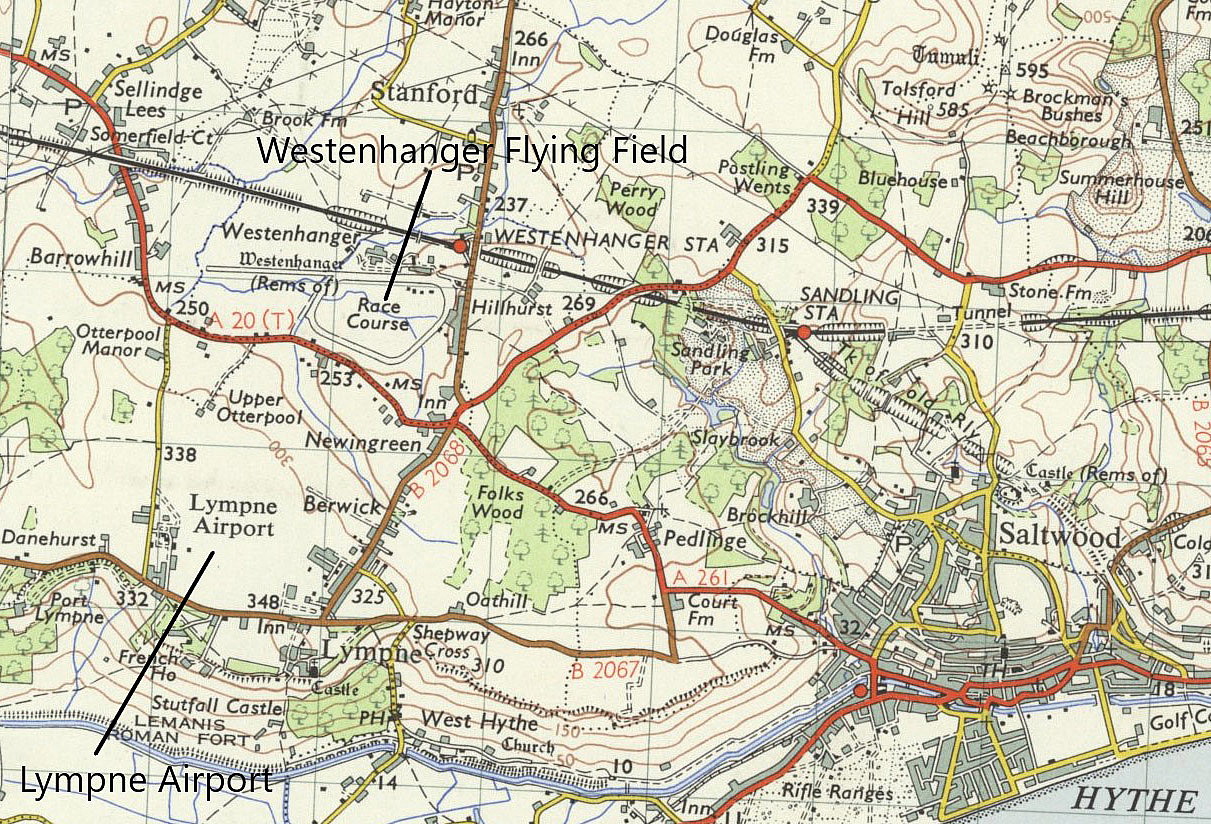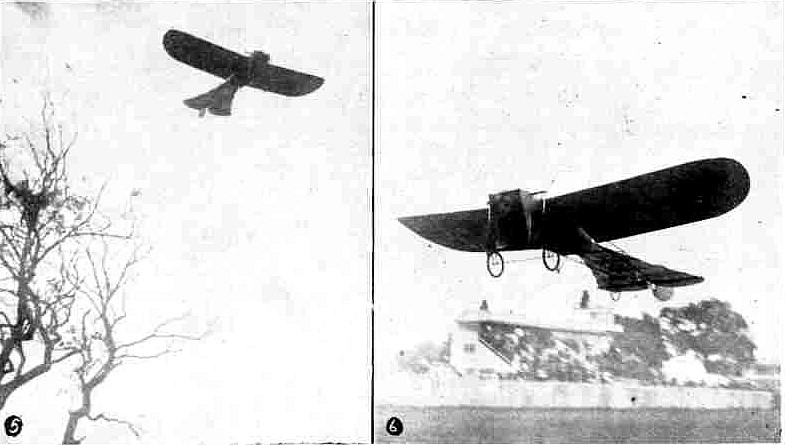Westenhanger
WESTENHANGER: Early aviation meeting
Note: All four of these images were kindly provided by Mr Michael T Holder
Location: On Folkestone racecourse, just S of the M20, about 6nm W to WNW of Folkestone town centre and roughly 8nm ESE to SE of Ashford town centre
Period of operation: Monday 19th to Thursday 22nd September 1910
NOTES: All the credit for finding this information has to go to Mike Holder who is a great friend of this 'Guide'. All I have done is adding a few tweeks here and there.
For example, it is very noticeable that many if not most 'Aviation Displays', 'Aerial Exhibitions' and the like, (what we would today call air shows), before WW1 were held on racecourses. For very practical reasons. They had all the facilities for handling large crowds and had a large flat(ish) area in the centre of the racecourse circuit with an unobstructed view.
As might be expected there was a great deal of newspaper coverage of this event and, if you would care to look it up, (which I highly recommend), the Folkestone, Hythe, Sandgate and Cheriton Herald published an extensive detailed account on Saturday the 24th September. The event was planned for three days, (Monday to Wednesday), but such was the interest aroused that a last minute decision was made to extend the event into Thursday. Needless to say, at such short notice with no radio or TV coverage, this resulted in far fewer people turning up. But, nevertheless it seems, a thousand or more did attend.
THE AVIATORS
It might seem remarkable today that a major aviation event could be arranged with just three aviators with their machines turning up. But, in those days a large crowd could be expected if just one aeroplane appeared around the country. We need to remember that very few people had seen an aeroplane, (or machine as they were usually referred to), let alone one actually flying.
It appears that Mr G.A. Barnes and the American aviator Mr John H. Moisant both had monoplanes, pretty much based on the design Blériot had used to cross the English Chanel the previous year. Mr Cecil Grace was the third participant but we don't know which type he used. Quite possibly a 'Blériot' type simply because he had recently flown as a passenger with Moisant from Paris to London?
Clearly a monoplane has distinct aerodynamic advantages over a biplane, but, for military use in those days it was very difficult to make a design strong enough for aerial warfare, which demands aerobatic capabilites. This explains why, pretty much up until the early to mid 1930s, most aircraft - light, commercial and military - were biplanes.
SOMETHING TO THINK ABOUT
It appears that all the flights made during this Meeting were of short duration. Cecil Grace making one flight lasting 15 minutes. Moisant making a flight of 12 minutes on the Wednesday. On the Thursday Moisant made four flights with passengers of around seven minutes duration, three of whom were women. It is today usually forgotten that many women were very keen indeed to experience flight. No doubt they seeing the opportunity to exert their rights to be regarded as equals. Quite rightly so of course.
SOMETHING WENT WRONG
Right from the start it seems, Mr G.A. Barnes was having problems with his engine. Here is an example from a newspaper report:
"The aeroplane ran along the ground for some little distance, and then rose into the air. It attained a height of about eighty feet, but was evidently not running very well, as Mr. Barnes had to descend in another field on the opposite side of the course, near the railway line. He did not stop his engine, but endeavoured to rise again, and after cleverly running his machine round the field two or three times was successful in doing so."
We always need to remember the tremendous pressure having a large crowd exerts on anybody performing. It takes great strength of character and guts to admit defeat - and to stop and walk away. The show must go on etc, etc.
"He then endeavoured to return to his starting point, with the wind behind him. The onlookers saw with anxiety that he was struggling with his levers to keep his machine aloft. Time after time the engine could be heard to be missing fire, and anxiety gave place to some alarm when it was seen that the monoplane was careering wildly."
It was also reported that, before deciding to fly, Barnes had tossed some grass into the air and declared the wind was too strong for flying. But then decided to take his chances.
"A little further on he came near to the earth, and was evidently trying to descend. One account suggests he could not stop his motor, but whatever the reason, he saw danger ahead in a clump of trees near the Ashford Road, which he was rapidly approaching, and determined to jump from the machine before disaster came. He was seen to scramble out of the seat, and throw one leg out preparatory to leaping. Then the disaster followed with appalling suddeness. With the weight of the aviator on one side, the aeroplane lifted its wing on the other, and made a rapid rise."
Barnes then fell to earth from a considerable height and was rendered unconscious with severe head injuries. But, he appears he survived after treatment in hospital. Did he ever attempt flying again? Indeed, after such severe head injuries - could he have led a normal life? Probably we will never know?
What is without any doubt is that any kind of progress demands great sacrifice in one form or another. Be it in technology, the arts, sport or any other human endeavour.
We'd love to hear from you, so please scroll down to leave a comment!
Leave a comment ...
Copyright (c) UK Airfield Guide























